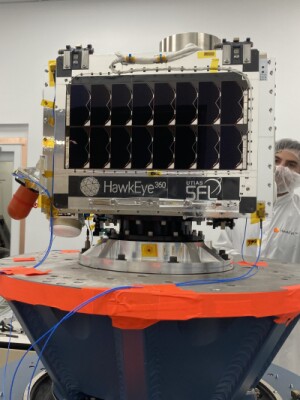I spent the first half of last week in Dallas, TX at the Fall BIMForum/BuildCon Symposium. While the conference was a departure from my normal conference schedule, it proved more applicable to my current projects than I had expected.
This particular symposium was a joint effort held in conjunction with the Structural Engineering Institute and the USIBD. As you might expect given those different groups, there were multiple tracks, including a USIBD track focusing on reality capture technologies and how they related to the various disciplines in attendance. This is where I spent the bulk of my time. Having not attended this conference previously, I really can’t speak to attendance or year-to-year differences. However, I do have a list of the top five takeaways, or the things that stood out to me while I was in attendance.
- Terminology is an issue: BIMForum may be best known for its Level of Detail (LOD) and Level of Accuracy (LOA) standards, but the lack of more general terminology seems to be the source of a lot of confusion. This was especially apparent during the Q&A section at the end of presentations when terms like “model,” “point cloud,” “point cloud model,” and “BIM” were used interchangeably. The result often meant the presenter answered a question not asked, or the attendee trying to re-ask the question multiple times in hopes of redirecting to some common ground. Considering that those in attendance are the professionals leading the charge, I can only imagine the level of confusion currently existing in the industry.As a side note, new LOD and LOA standards were presented and should be available soon as were some BIM planning and implementation guides.
- Sharing does not equal caring: Since we’re all working on the same project, we’re all sharing the same model. Seems like a good idea. However, I heard a fair bit of complaining from one discipline about having to deal with the needs of another. The best example was in the pre-fabrication discussions. Those in the build space mentioned the BIM being full of details they didn’t need, which meant they were just using 2D shop drawings. While, at the same time, other presenters demonstrated the need for coordination, these discussions were a stark reminder that the tools used for coordination still vary greatly from trade to trade.
- Litigation is a natural force: “BIM” may have been the only word said more than litigation. I left with the idea that many builders, engineers, developers, etc. look at litigation as both a necessary cost and a potential revenue stream, depending upon their role in each project. More than once the possibility of litigation was mentioned as a motivation for pre-fabrication, as risk management of manufactured objects tends to be superior compared to on-site construction.It also seemed well understood that most claims were settled out of court with an attached non-disclosure, a fact that leaves the entire industry in the dark as to how prevalent the practice really is.
- It’s all about commoditization: Every presenter that talked about pricing and services referred to commoditization as an inevitability. Considering that the theme for this BuildCon Symposium was “Lean Comes to Life: The Impact of Prefab on the People” it probably should not come as a surprise. What I did find surprising was the blanket acceptance versus the oft-referenced engineering ideal of “added value” to keep from becoming a commodity.
- Lots of competing factoids: I was asked to present on methods for finding, hiring, and retaining reality capture talent. We did some live polling and over 90% of those attending my presentation said they were currently looking to hire. They complained about headhunters poaching their staff and having to increase wages more than annually. Though everyone agreed that the costs for reality capture services are going down, I’m not sure that hardware and software advances can account for the disparity.
I heard Matthew Englert of Rosendin Electric state that one of the reasons they found prefabrication easier was that they could not find enough licensed tradesmen to perform the work at installation sites. I then heard Cindy Baldwin of VDCO Tech warn that we are scheduled to lose 500,000 construction jobs to automation by 2020. Perhaps there is some gross generalization of the terms tradesperson vs. construction job but I once again found myself feeling confused.
Time and again, I would jot down a statistic only to see another seemingly contradictory statistic on the opposite page in my notebook. It will be interesting to see how these bear out. I have a feeling that we will need to start putting qualifiers on these statements, as the close relationship between construction and real estate show that each market is a bit different. Digging deeper may show that the factoids do not actually contradict one another as perhaps those construction jobs to be lost may be mostly framing carpenters while we still need many more electricians. As it stands now, one’s statistic of choice may say more about their perception (half full or half empty) of the market than the current state of the market itself.
Lastly, I wanted to thank those putting together the copious amount of documentation and reporting that is coming out of the USIBD, BIMForum, and the American General Contractors Association. It really is the dirty work that needs to be done in order to foster the growth of 3D/4D documentation and management in the built environment. If you ever find yourself in a meeting or writing a proposal referring to LOD standards, you should thank them as well.






